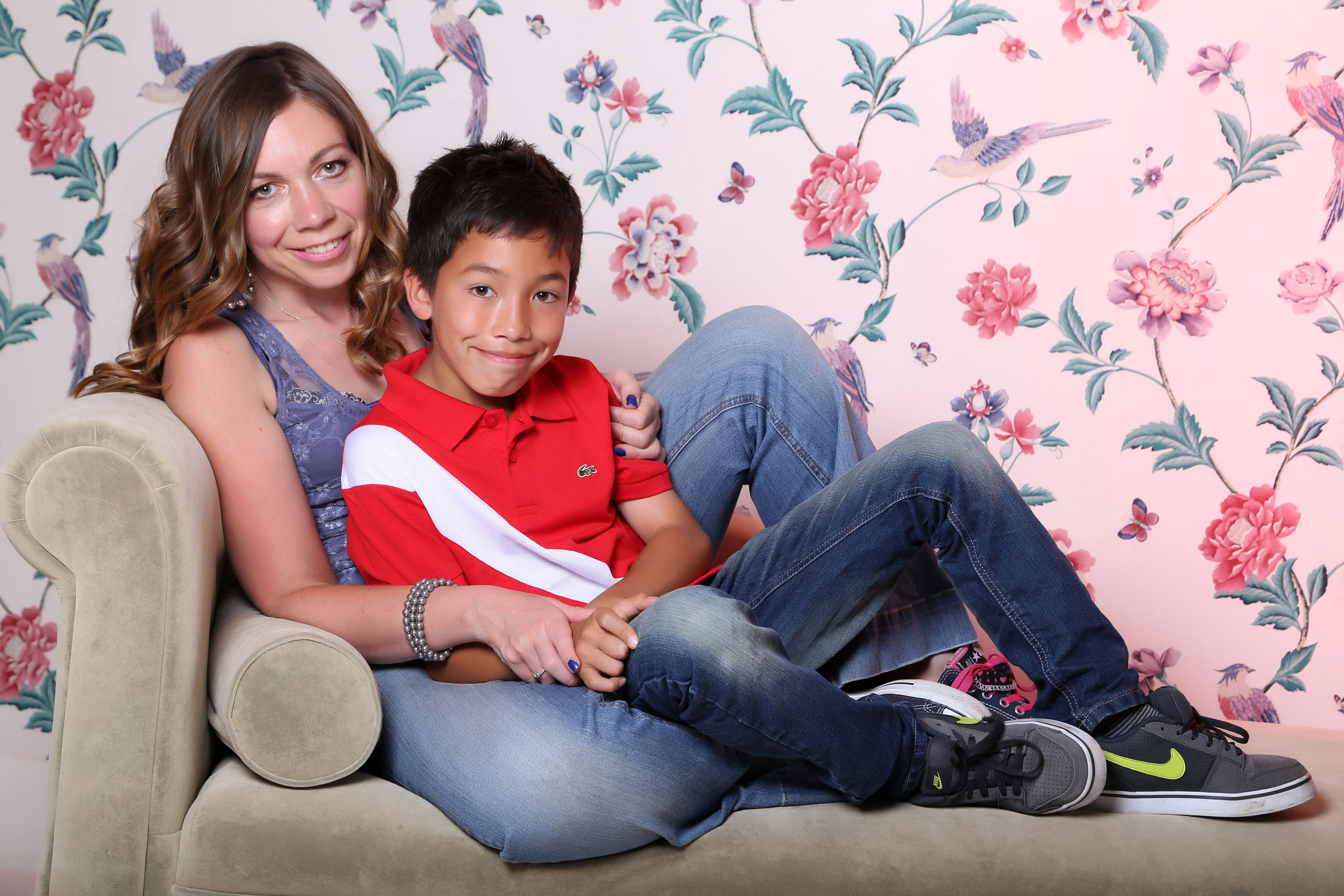CMT: The hidden pain of a common condition
Charcot-Marie-Tooth is one of the most common inherited neurological disorders in the world, yet many people have never heard of it. Lauren Taylor finds out more.
Around 23,000 people in the UK are currently living with Charcot-Marie-Tooth disease, or CMT, and it affects hundreds of thousands more worldwide.
Despite that, awareness of the condition is extremely low – which the charity CMT UK is on a mission to change.
It affects the peripheral nerves, mainly in the arms and legs, and, put in very simple terms, means messages to and from muscles and the brain don’t work properly.
Everyday tasks, like getting dressed, doing the food shopping and using stairs – things that are easily taken for granted – can be a nightmare.
Its impact and severity varies greatly from person to person, but it generally results in some degree of muscle-wasting, weakness, loss of sensation and sometimes deformity (such as over-arched feet), and pain is a big part of CMT too.
But the biggest hurdle for many sufferers is the widespread lack of knowledge of the condition – even within the medical profession.
Karen Konodo, 39, is no stranger to blank looks and ignorance.
“No one has ever heard of CMT when I explain what I have,” she says. “It’s hard for people to understand because it’s not visual unless I’m moving.
“I was diagnosed during primary school after a teacher actually called my mum in and asked if I was ‘spastic’.”
Because CMT causes muscle weakness in the hands, fiddly tasks like doing up buttons or turning taps, can be difficult. It also affects the lower legs and feet, causing people to walk awkwardly, slowly or struggle with distances. Painful limbs and unexplained falls are common.
People with CMT tend to walk on the outside of their feet with an inward, downward motion. Many have tight tendons, which means their arches are pulled high and feet can be very small or different sizes – making buying shoes impossible.
It can take years for a diagnosis. Though signs can start quite early on, people with CMT often aren’t diagnosed until later in life – it’s not unusual for symptoms to be mistaken as ‘clumsiness’ in children.
It’s progressive, getting worse with age. There’s currently no cure but CMT UK is fundraising and campaigning for continuing research, in the hope of improving understanding and potential treatments.
“I was in tears last week doing the food shopping and an elderly lady asked if she could carry my bags, so I must have looked quite distressed,” says Karen, from London. “I look normal but I can’t put the pound in the trolley, I can’t take my card out of my purse or carry my shopping bags.”
As a single working mum, her son Joji’s help is invaluable.
“Joji does the buttons up on my dress every day,” she says.
There’s a 50% chance that parents carrying the CMT gene will pass the condition on to their children, but thankfully Joji isn’t showing any signs.
There are three types of CMT and a huge variety of classifications within each type. For CMT UK, one of their key aims is to help ensure those affected don’t suffer in silence.
Karen’s biggest challenge is with walking. She moves slowly, dragging her legs, and has a limp.
“There’s just no power in my legs. I have to drag myself up a set of stairs to work every morning, relying on the handrail, and a couple of times a week someone will say to me, ‘You can’t be tired already – it’s only 9am!'” she explains.
Despite everyday difficulties, Karen is positive – CMT hasn’t stopped her from living in France and Japan, or working as a primary school teacher. It’s the ignorance of other adults that can be most harsh.
Her legs are misshapen and their size out of proportion to the rest of her body. “Someone once asked me why I had fat legs when I’m not a fat person. That really upset me,” she says.
Like Karen, Emily Haylock, 21, from Dorset, began experiencing symptoms aged three – she had difficulty walking – but doctors put it down to behavioural problems.
Throughout her childhood she struggled to understand why her school friends could do things she couldn’t.
“I felt really alienated,” Emily says. “No one understood so I found it hard to make friends.”
CMT has had a big impact on her life.
“Some days I can walk for five to 10 minutes, other days only a few steps,” she explains. “It affects every aspect of my life.”
Aged 14, she was diagnosed with scoliosis – abnormal curvature of the spine. Medics finally thought they’d found the solution as she underwent surgery to straighten it, but her walking didn’t improve.
It was only when her mum, Amanda, read about CMT on the internet, that Emily was finally diagnosed at 15.
“We went back to the paediatrician and said, ‘This is what Emily’s got’. He did look a bit shame-faced I’m pleased to say,” Amanda, 50, says.
She had no idea she carried the gene that Emily had inherited at that point but, 10 years ago, Amanda was diagnosed with CMT as well.
“I’m luckier than Emily, her life is governed by CMT,” she says. “Mine is very mild in comparison. I can just about manage a mile walking, after that my legs won’t move any further and it’s very painful.”
For Emily, surgery to help straighten her right foot last November has been a lifeline, and she’s due to have the left one done soon.
“It’s made a lot of difference. I can balance more easily and put weight [on my foot] for longer periods,” she says.
Emily’s determined not to let CMT stop her from further study and finding work. But while the disease doesn’t affect life expectancy, it does progressively worsen, and Amanda’s only too aware of what her daughter’s future could hold – her uncle and cousin are both in care homes with CMT at the ages of 62 and 46 respectively.
“I try to keep that from her so she doesn’t worry too much, and just gets on with her life now,” Amanda says.
Connecting with CMT UK has been a huge help to Emily, and hundreds like her, making living with the condition less alienating.
“They have young people’s weekends away, which were very good for Emily. She could see other people had the same problems but could still have fun. It helped her understand what’s going on with her body,” says Amanda.
Karen Butcher, who runs CMT UK, says the lack of knowledge is frustrating.
She has CMT herself, as do her children, Catherine, 19, and Jason, 15.
“CMT makes you feel old before your time. On a bad day you can feel 95. Nerves in the lower legs degenerate in a fairly unequal fashion, with certain muscles retaining their strength.
“But a symptom everyone has is fatigue and I don’t think anyone without a condition like this can understand why tiredness is such an issue. Many employers certainly don’t.
“The lack of awareness has led to some people losing welfare support after having operations to help. But surgery doesn’t make it go away.
“People with CMT must know, however, that they can have a reasonable quality of life with a normal life expectancy.”
:: September is CMT Awareness Month. For more information and support visit www.cmt.org.uk
Latest posts by Sally - Silversurfer's Editor (see all)
- Pocket money memories - March 14, 2025
- Belton Farm Red Fox Mac and Cheese Croquettes - March 11, 2025
- Downsizing & decluttering: A guide to simplifying your life - March 11, 2025
- Make your roof work for you: The smart way to save with solar - March 10, 2025
- Top five Fred. Olsen Cruise Deals - March 10, 2025





















